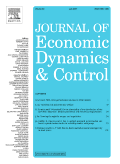
In Search for Yield? Survey-based Evidence on Bank Risk Taking
Monetary policy can have an impact on economic and financial stability through the risk taking of banks. Falling interest rates might induce investment into risky activities. This paper provides evidence on the link between monetary policy and bank risk taking. We use a factor-augmented vector autoregressive model (FAVAR) for the US for the period 1997–2008. Besides standard macroeconomic indicators, we include factors summarizing information provided in the Federal Reserve’s Survey of Terms of Business Lending (STBL). These data provide information on banks׳ new loans as well as interest rates for different loan risk categories and different banking groups. We identify a risk-taking channel of monetary policy by distinguishing responses to monetary policy shocks across different types of banks and different loan risk categories. Following an expansionary monetary policy shock, small domestic banks increase their exposure to risk. Large domestic banks do not change their risk exposure. Foreign banks take on more risk only in the mid-2000s, when interest rates were ‘too low for too long’.




